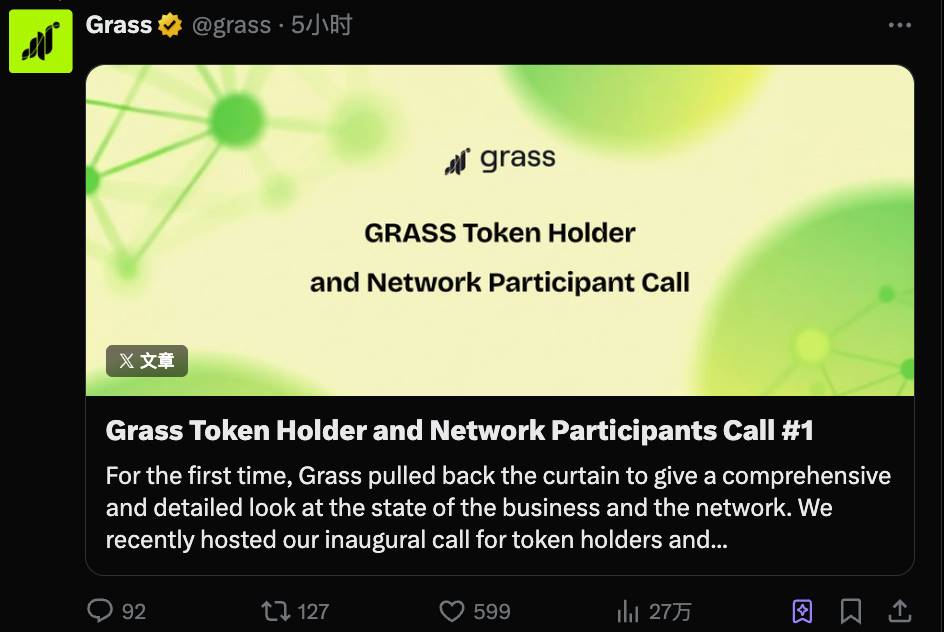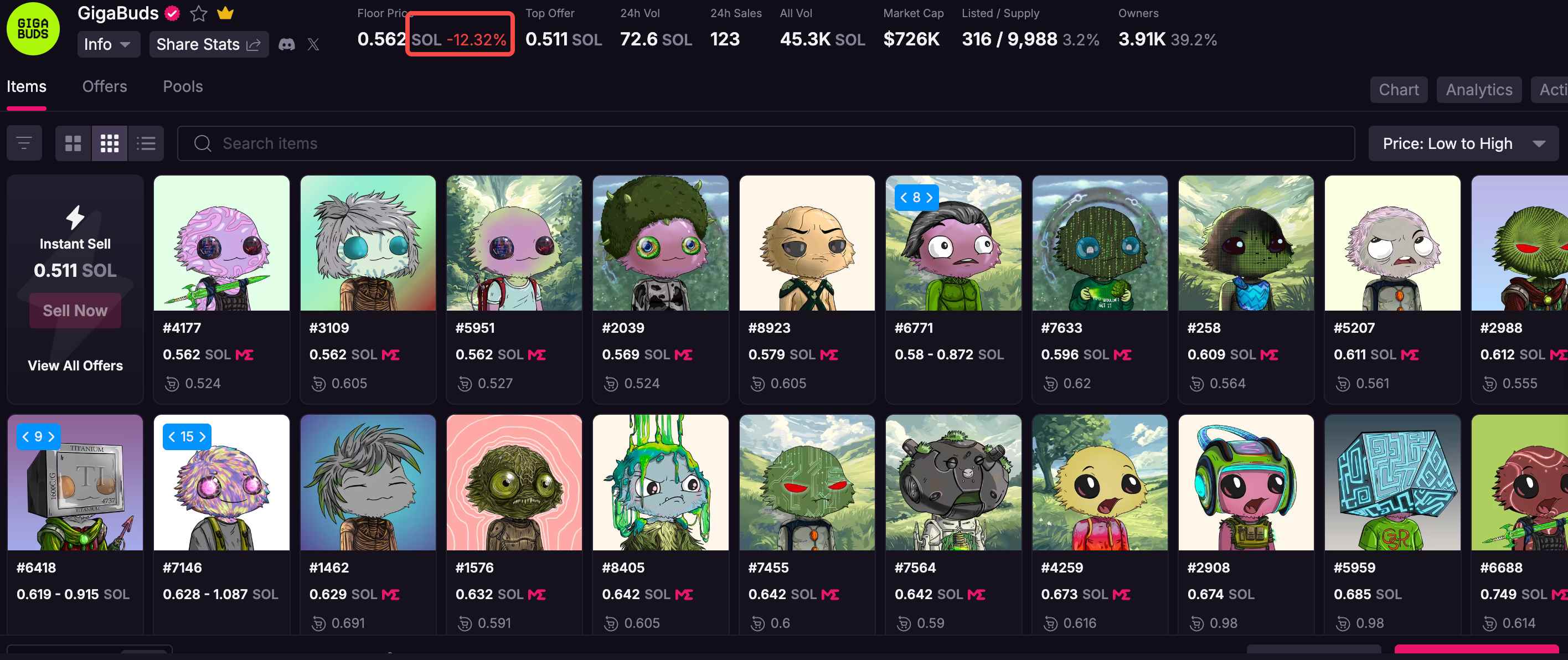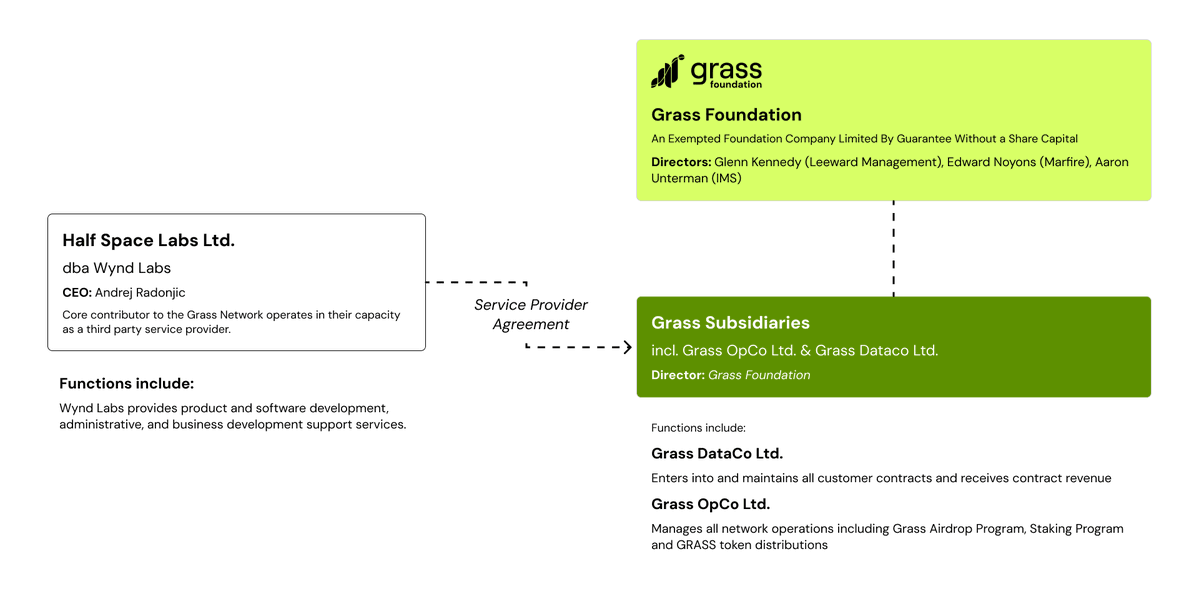Streamlined: The second round of token airdrops is tentatively scheduled for the first half of next year.
Written by: Deep Tide TechFlow
Do you remember the star project Grass from the last DePIN narrative?
On November 16, GRASS just fell to a historic low of $0.26. However, a week later, the token rebounded over 45%, outperforming the market during the same period.
There is a sentiment in the community that the previous drastic changes in the GRASS token price were driven by speculation around the project's first Token Holder Call, where all token holders hoped the official team would reveal stronger fundamental information.

Today, Grass also completed this Token Holder Call. After listening to the content, I found it was not the typical "AMA" of crypto projects, but rather an information disclosure close to a financial report;
Grass's revenue data, customer composition, buyback plan, and airdrop timeline were all disclosed for the first time.
If you missed this meeting, we quickly summarized the data and key information revealed during the meeting based on the meeting video and official recap to help you determine which signals are worth paying attention to.
Meeting replay link: Click here

Revenue grew from zero to ten million dollars in just three quarters?
This is the first time Grass has publicly disclosed revenue data:
Q1 2025: Nearly zero
Q2 2025: Approximately $2.75 million
Q3 2025: Approximately $4.3 million
Q4 2025 (forecast): Approximately $12.8 million
The official team stated that the expected revenue for just October and November alone would reach $10 million. It should be noted that the Q4 data is still a forecast and the actual situation remains to be verified.

How does Grass make money?
When discussing revenue, you need to understand what Grass's business is.
Grass is a distributed bandwidth network. After users install the plugin or app, Grass uses your idle network bandwidth to scrape content from public web pages, which can include text, images, and videos.
Because requests come from ordinary household IPs around the world, they are not easily blocked by websites, which is very valuable for clients that need to collect data on a large scale.
Who are the clients? Mainly AI companies. Training large models requires massive amounts of data, and Grass can help them acquire these materials at a lower cost. In simple terms, Grass "borrows" bandwidth from users, packages it into data collection services, and sells it to AI companies, earning the difference.
Where does the revenue come from?
It was mentioned in the meeting that 90% of the revenue comes from "multimodal data": that is, the collection services for non-text content such as video, audio, and images; 98% of the revenue is related to AI model training.
This indicates that Grass's current customer base is very concentrated: mostly AI companies, primarily purchasing training materials.
Focusing on business is one aspect, but it also means that if there are changes in the AI training data market, Grass's revenue will be directly affected.
About the clients
Grass does not disclose its client list, citing that AI companies consider training data to be a trade secret. Information mentioned during the meeting includes:
In Q4, a hyperscaler was newly signed, which you can understand as a large cloud computing vendor; and a leading laboratory in the field of video generation.
Almost all AI clients that have collaborated have made repeat purchases.
However, these statements come from the official team, and the authenticity of the data is difficult to verify externally.
Token buyback occurred, but not much
It was disclosed in the meeting that Grass has used business revenue to buy back GRASS tokens from the open market, completing a buyback of about $100,000 last week and currently executing a buyback of about $250,000 this week.
The funds for the buyback come from the revenue of the first three quarters of this year. To prevent skepticism about the buyback execution, the official team stated that they would later disclose the wallet address holding these tokens.

The total buyback amount is approximately $350,000. Compared to the combined revenue of about $7 million in Q2 and Q3, this buyback amount accounts for about 5%, which is not particularly large, and more like a reflection of attitude.
The official team mentioned that future buybacks will shift from manual decisions to programmatic execution, but no specific rules were provided.
However, it is important to note that buybacks are not a guaranteed catalyst; both HYPE and PUMP have buybacks and real revenue, but token prices can still experience significant drops in phases.
The official team also stated two things: one is that they will buy back tokens, and the other is that most of the revenue will be invested in growth. How to differentiate these two, and the specific ratio, is currently unclear. How long the buybacks can continue and whether the scale can be expanded ultimately depends on whether revenue can continue to rise.
Second round of airdrops set for the first half of next year
Grass conducted an airdrop last year, distributing GRASS tokens to early participants. This meeting confirmed the time window for the second round of airdrops:
The first half of 2026.
The method of claiming will change
Unlike the first airdrop, Airdrop 2 will not be claimed through external wallets but will be distributed through Grass's official upcoming built-in wallet. This wallet is based on account abstraction technology and will be embedded in Grass's product interface.
To translate: In the future, you won't need to connect third-party wallets like MetaMask to claim airdrops; you can receive them directly in the Grass backend.
The rules will change
The official statement is that the new round of airdrops will "emphasize long-term network contributions" more. However, the specific criteria for calculating contributions, how long one must run to be considered long-term, and how different devices and behaviors will be weighted have not been disclosed and will be clarified once the wallet is launched.
What it means for existing users
If you are currently running a Grass node, this meeting did not provide clear action guidance. The only certainty is: the rules will change, the timing is in the first half of next year, and there will be a new calculation method. As for whether current points, levels, and device numbers can retain their weight, it is currently unknown.
The current market is in a bear market, and whether the overall crypto situation will improve in the first half of next year remains uncertain. The timeline for the airdrop plan given by GRASS is quite vague, which I believe is somewhat a way to cope with the current bear market.
Monthly active users increased from 3 million to 8.5 million, aiming to become a real-time data source for AI
Grass's network scale has grown significantly over the past year. Official data shows that monthly active participants have increased from about 3 million at the time of the first airdrop to about 8.5 million now. Mobile users account for about 38%, with more than one-third contributing bandwidth through the mobile app rather than a computer plugin.

The official team stated that the total amount of multimodal data (video, audio, images) accumulated by Grass exceeds 250PB. 1PB is approximately equal to 1 million GB. According to the official statement, this scale is "sufficient to train a cutting-edge video generation model."
New direction: from selling training data to providing real-time queries
Grass is developing a new product line called Live Context Retrieval (LCR), which translates to "real-time context retrieval."
The existing business helps AI companies collect data for training models in a one-time, large-scale manner. LCR has a different positioning, providing real-time data during the operation of AI models. For example, if a model needs to query the current content of a webpage, Grass can scrape and return it instantly.
Currently, LCR is still in its early stages, referred to by the official team as "V0 version," and is being tested with three SEO companies and one AI laboratory.
The official explanation is: training data is a large business, high in amount but low in frequency, making it unsuitable for on-chain settlement. LCR is a high-frequency, small-amount scenario, where each query can correspond to a small payment, making it more suitable to be completed with tokens.
If LCR can be successfully implemented, the GRASS token will have more practical applications in the business. However, this is still in the planning stage, and LCR itself has not yet generated revenue.
At the same time, the hardware device Grasshopper, originally planned for release this year, has been delayed due to supply chain issues caused by tariffs, with a specific timeline to be announced later.
A statement deleted from the official minutes
During the part of the meeting discussing token functionality, Grass CEO Andre said, "Gigabuds have no utility," meaning that Gigabuds have no functional use.
However, this statement did not appear in the written minutes released by the official team after the meeting.
What are Gigabuds?
Gigabuds is an NFT series launched by Grass. Some holders may expect it to have a bonus effect in future airdrops or network rights, but the official team clearly denied this expectation during the meeting.
The drop in floor price may also be a response to this statement.

As for why it did not appear in the official minutes, the official team did not provide an explanation. Possible reasons include avoiding triggering negative emotions among NFT holders or considering it not core business information.
This statement was indeed made during the meeting, and it is recorded in the subtitles.
If you hold Gigabuds and purchased them based on the expectation of "potential future utility," this statement serves as a clear official position. Whether the NFT itself still has collectible value or secondary market value is another matter, but the path of functional utility has been effectively closed off by the official team.

Revenue goes to the foundation, and the development team receives service fees.
Many crypto projects have opaque company structures, making it unclear to users who the revenue belongs to, who manages the tokens, and what the relationship is between the development team and the project party. In this meeting, Grass clarified its structure.

Three entities, each managing their own area
Grass Foundation is a foundation registered in the Cayman Islands, with no shareholders. It has two subsidiaries:
Grass OpCo: Responsible for network operations, managing airdrops and staking.
Grass DataCo: Responsible for B2B business; all client contracts are signed by this company, and revenue also goes to this company.
The development team is outsourced
The team responsible for product development is called Wynd Labs. It is not a subsidiary of Grass but a third-party service provider. Wynd Labs charges service fees and does not participate in Grass's revenue sharing.
A key point emphasized during the meeting: even if the client is negotiated by Wynd Labs, the contract is signed by Grass DataCo, and the revenue belongs to Grass DataCo.
What is the specific service fee?
The official team did not disclose this. Therefore, it is impossible for outsiders to determine how much the development team actually takes home.
To summarize:
This meeting covered revenue data, buyback progress, airdrop timeline, product direction, and company structure. For a DePIN project, this level of information density is uncommon.
What was not discussed: who the specific clients are, how large the buyback will continue to be, the specific rules for Airdrop 2, and when the new business will start generating revenue. The official team either stated that they could not disclose this information or that it would be announced later.
This was Grass's first such meeting, and the official team stated that there will be more in the future. For token holders, these business-level developments may be more worth tracking than price fluctuations.
It is also hoped that more crypto projects can publicly disclose their business revenue situations like this; in a market where everyone is struggling, this is already quite rare.
免责声明:本文章仅代表作者个人观点,不代表本平台的立场和观点。本文章仅供信息分享,不构成对任何人的任何投资建议。用户与作者之间的任何争议,与本平台无关。如网页中刊载的文章或图片涉及侵权,请提供相关的权利证明和身份证明发送邮件到support@aicoin.com,本平台相关工作人员将会进行核查。




